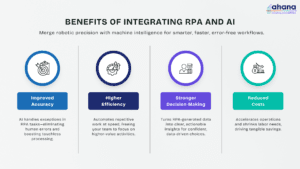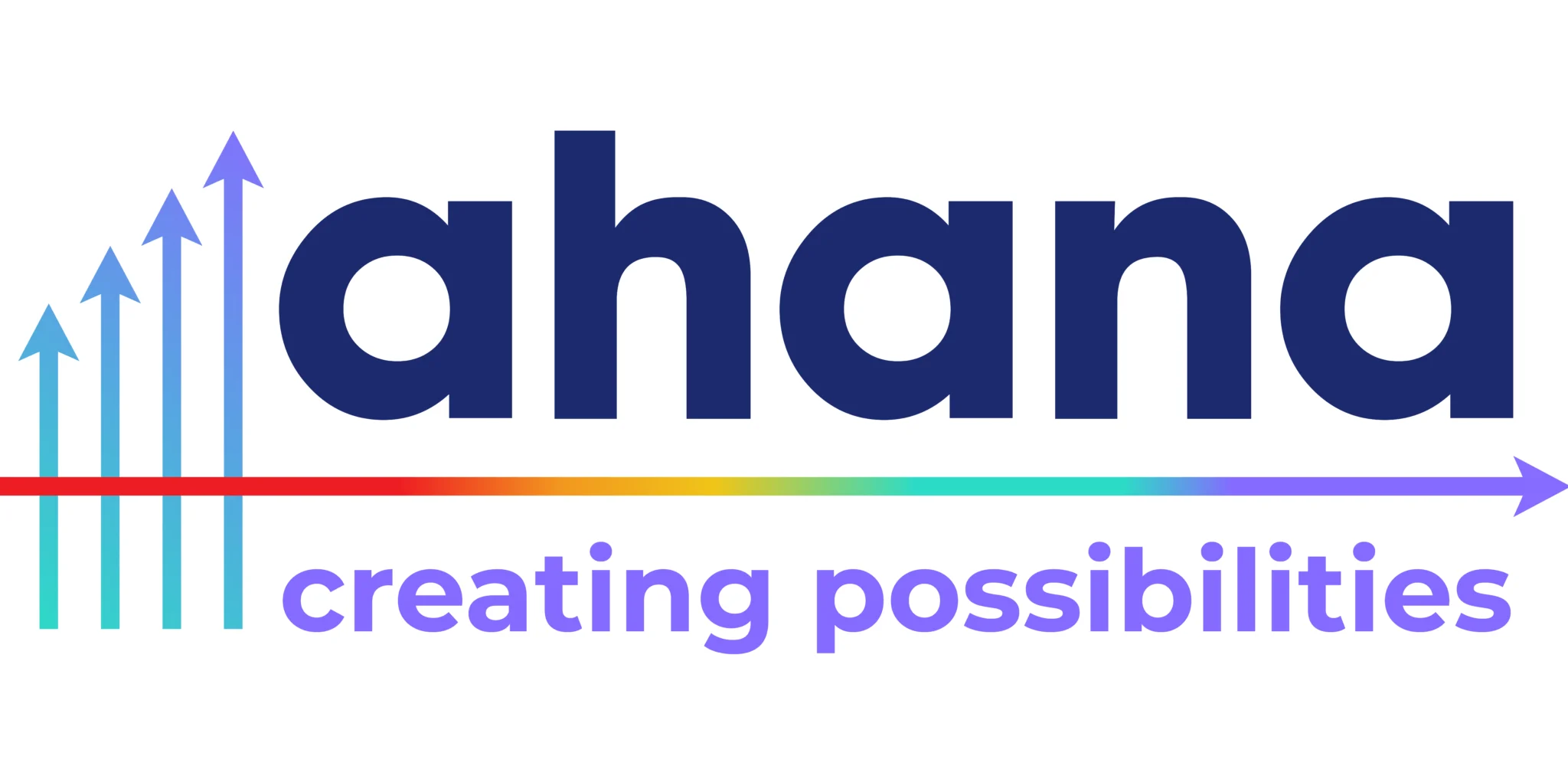As enterprises continue to recognize the transformative power of Robotic Process Automation (RPA), adoption rates have surged, and with good reason. According to industry surveys, 85 per cent of organizations confirm that RPA consistently delivers on non‑financial metrics such as accuracy, responsiveness, and adaptability, providing proof that intelligent automation yields value far beyond mere cost reduction.
Yet as business processes grow ever more complex, traditional RPA can fall short of advanced decision‑making and contextual understanding. That is where Artificial Intelligence (AI) and Machine Learning (ML) come into play. By embedding cognitive capabilities such as natural language processing, pattern recognition, and predictive analytics into RPA workflows, organizations unlock Intelligent Automation (IA). This dynamic fusion not only accelerates routine task execution but also empowers systems to learn, adapt, and optimize themselves over time.
In this article, we will explore various aspects of RPA and AI, focusing on their combined use cases, applications, benefits, and challenges.
Understanding RPA and AI:
RPA refers to bringing automation to high-volume, rule-based tasks in various business operations. It brings higher speed and efficiency, especially for linear tasks within legacy systems.
On the other side, AI introduces cognitive functions and facilitates complex decision-making and analytical tasks. It enables RPA to manage processes that require significant data interpretation. The amalgamation of RPA and AI can streamline operations by leveraging the efficiency of RPA in executing repeating tasks while harnessing AI’s analytical prowess, enhancing overall performance.
It supports self-adjusting algorithms, automated auditing, AI-based exceptional handling, and enriched data validation, fostering a robust automation energy.
Why should you integrate AI with RPA?
When it comes to RPA, most of the tasks are repetitive and mundane. They seem quite easy to do. In these simple tasks, RPA simply executes its programming. However, if the tasks become complex, RPA needs to be reprogrammed. But artificial intelligence is more dynamic.
It relies on large data sets to inform RPA systems how to make decisions. An exciting advancement in the automation landscape is the integration in which RPA becomes the engine that accelerates capabilities like AI, ML, and NLP with the ability to produce output at scale.
An AI algorithm can be taught to reason out exceptions and variations in a process and to determine the appropriate actions to take, and RPA will perform this action. The AI toolbox is crammed with innovative applications to extract accurate understanding from unstructured data and inputs. It leverages technologies like computer vision, natural language processing, speech recognition, intelligence document processing (IDP), and optical character recognition (OCR).
Benefits of Integrating RPA and AI:
So far, we have understood both the technologies and how their amalgamation works. Let’s discuss some of the top benefits of combining RPA with AI:

1. Improved Accuracy:
RPA is capable of automating repetitive tasks and eliminating any chances of human error. However, in various workflows, exceptions exist for which human intelligence is required. The introduction of AI into the workflow for intelligent decision-making or intelligent control(s) will limit the need for such exceptions, increasing touchless processing and improving accuracy.
2. Higher Efficiency:
RPA significantly reduces the time required to complete the tasks. Faster process execution improves organizational productivity and agility. It can happen both directly and indirectly as a result of exonerating employee time, enabling them to focus on other higher-value tasks.
When AI is used based on unstructured data generated by RPA workflows, improved process efficiency results in quicker access to structured data; this can potentially improve the efficiency of the RPA outcomes.
3. Stronger Decision-Making:
AI, in particular, has a part to play in guiding better business decision-making. When it leverages RPA, a huge amount of data can be processed and analyzed to gain vital insights. Based on this data, it can suggest various courses of action. Thus, businesses are no longer required to do guesswork while making decisions and have the confidence that they’re making data-driven choices that are most likely to be the right ones.
4. Reduced Costs:
For businesses deploying RPA and AI, faster processes and reduced demand for human resources contribute to substantial cost savings. As per Deloitte’s research, organizations have cut costs by over 25% with intelligent automation, which has made a significant impact on their profits.
Industry Use Cases of RPA and AI:
Practically, there are endless possibilities for RPA and AI. Yet, there are some industries that are leveraging these two technologies on a higher level compared to others. Here are some industry-specific use cases of RPA and AI:
1. Automobile Industry:
In the automobile industry, there is a paramount role of the warranties to attract and assure customers of the reliability of the vehicles. On a similar thought, a Delhi-based manufacturer of motorcycles and scooters also offered the first three years of the vehicle’s warranty in which customers can file three service claims. In the warranty process, a customer has to create a job card by mentioning details of the vehicle like registration number, chassis number, and other data attributes. The job cards are designed for transparency and to prevent fraudulent activities.
Despite the creation of job cards, there were increasing cases of fraudulent service claims across its huge network of service centres. It leads to high service costs along with threat to the brand reputation.
How RPA Can help?
Robotic Process Automation can perform a plethora of checks with no errors to prevent fraudulent service claims such as automated job card verification, duplicate claim detection, service centre monitoring, real-time document validation, and others.
Solution Offered By Ahana:
By leveraging RPA technologies, Ahana helped the manufacturer identify anomalies in job card images. It also leveraged deep learning algorithms with computer vision technology to check manipulation or tampering in job card images. The team also used Optical Character Recognition (OCR) technology to extra alphanumeric characters from vehicle identification numbers and registration plates.
This solution not only reduced the fraudulent activities but also helped in achieving a 60% improvement in processing time.
1. Banking and Finance Industry:
The banking industry runs on credit facilities and facilitates loans. A leading digitized bank was facing a roadblock of high turn-around time in the manual loan processing system. It was challenging to maintain timely approvals during peak periods due to the large backlog and delays caused by the spike in loan applications. The accuracy of data handling was hindered and their resources were stressed by the time-consuming nature of manual processing and the elevated danger of human error.
How RPA could help?
In this industry, the RPA can help by extracting loan application data from e-mails, verification of documents, applying pre-defined rules like credit score thresholds and others, and multiple other scenario-based ways.
Solution offered by Ahana:
Ahana developed a UiPath automated solution which can streamline the loan processing workflow by handling loan applications, automated verification of stamp paper charges based on the loan code, posidex and credit information verification for applicants, business logic compliance, and final verification.
This solution helped the client to achieve a significantly high speed of processing 3,000 loan claims in just 15 minutes which initially required 3 hours in manual processing. The operational efficiency also increased from 30-40 requests in 4-5 hours to just 20 minutes.
3. Logistics:
In the logistics industry, there are various repetitive and manual tasks for different purposes such as Customs House Agent (CHA) billing, trucking, warehousing, and others. These processes don’t just consume a lot of time but are also prone to human error, resulting in low efficiency and speed.
How RPA could help?
RPA can read data from various sources and auto-generate CHA invoices. It can also schedule truck dispatches based on pickup/drop requirements, and also auto-update stock logs across multiple platforms.
Solution offered by Ahana:
Ahana developed a bot to meet the specific needs of the client which includes data handling and logging, data entry and file management, customs documentation, CGM filing, and other repetitive tasks.
It helps in eliminating human help from 14 to almost 0 and optimises operational costs along with time optimization.
Conclusion:
Though individually, RPA and AI can help businesses to become effective and intelligent, when used together, they become a formidable force. Intelligent automation solutions marry the repetitive task of RPA with the cognitive skills of AI. It amplifies the strengths of both technologies, resulting in automated processes that are faster, smarter, and more accurate.
Ahana understands the importance of automation in business, which helps organisations improve efficiency, reduce operational costs, and enhance decision-making. By leveraging Intelligent Automation, we streamline processes, drive digital transformation, and enable AI-driven decision-making. With expertise in banking, healthcare, retail, and manufacturing, we help enterprises automate workflows, optimise resource utilisation, ensure compliance, and deliver customer-centric innovation.

